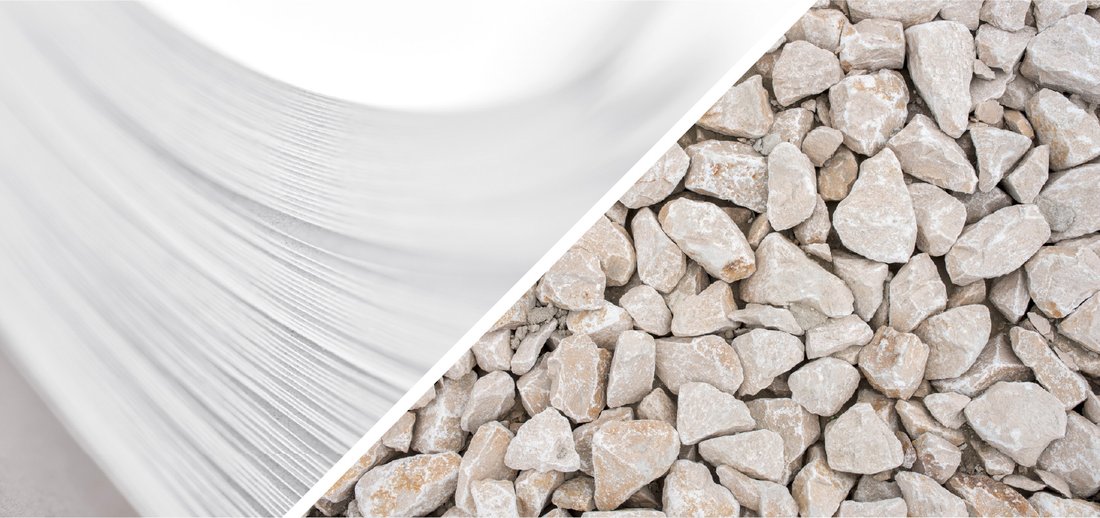STONE PAPER – THE ECOLOGICAL ALTERNATIVE TO PLASTIC

Paper made of stone? Paper is normally made of wood fibres and cellulose, isn't it? Correct, but there is also stone paper, also known as rock paper. This isn't paper in the true sense of the word, but a substrate composed of 80% calcium carbonate (limestone powder) and 20% polyethylene resin (HDPE, a petroleum-based plastic).
Stone paper has many advantages over plastic and conventional paper:
Wood-free – it is produced from limestone powder. Production completely dispenses with plant-based fibres.
Conserves resources I – the raw material used is a waste product from quarries. It does not require additional mining.
Conserves resources II – its production (a thermal process is used to fuse the stone powder with polyethylene resin, after which it is processed into webs) consumes much less energy and water than conventional paper.
Stable and tear-resistant – stone paper is much more resilient than paper made from wood fibres. And it is both water and fire-resistant. In consistency and possible uses, it is reminiscent of thin plastic.
Environmentally friendly – stone paper does not require chemical bleaches or acids to be whitened. It is naturally white.
Versatile – its smooth surface renders it suitable for offset, UV offset and digital printing.
In short, stone paper is an environmentally friendly, state-of-the-art alternative to both paper and conventional plastic. And thus, perfectly suited when a stable and resistant printing substrate is required.
For example, we print product tags on stone paper, therefore gradually reducing the use of plastic.
Here you can find more information about sustainability at Filtral:





